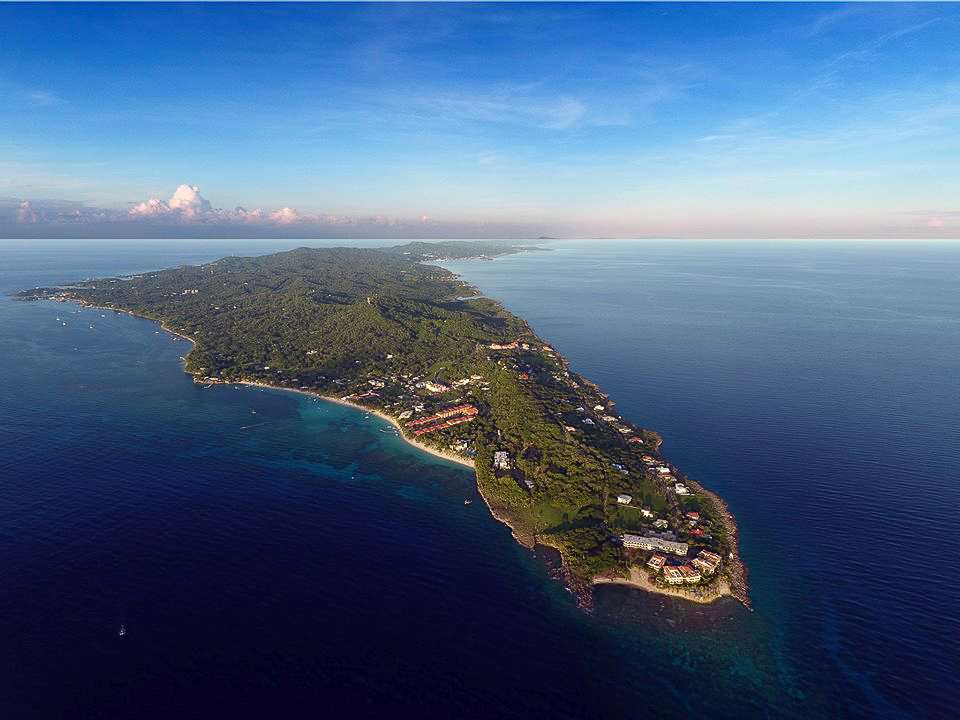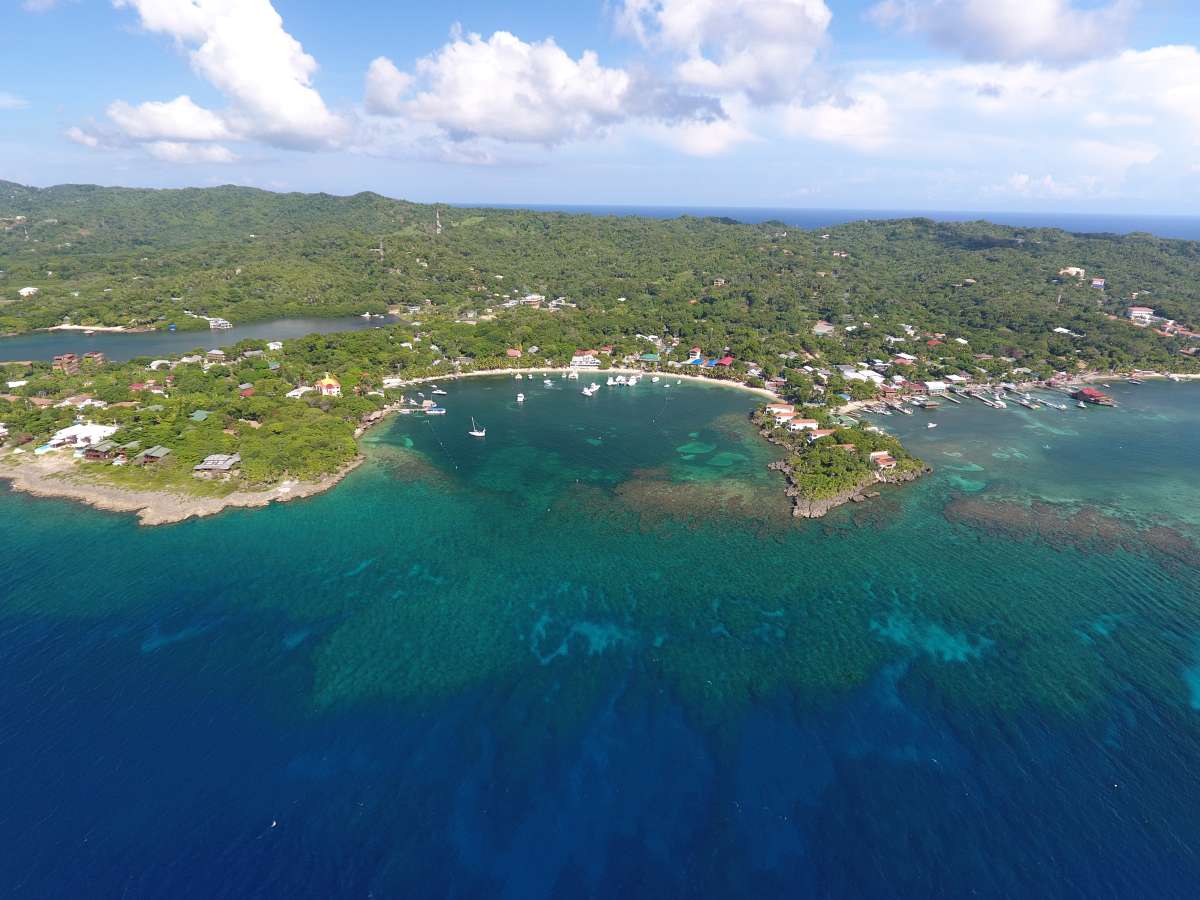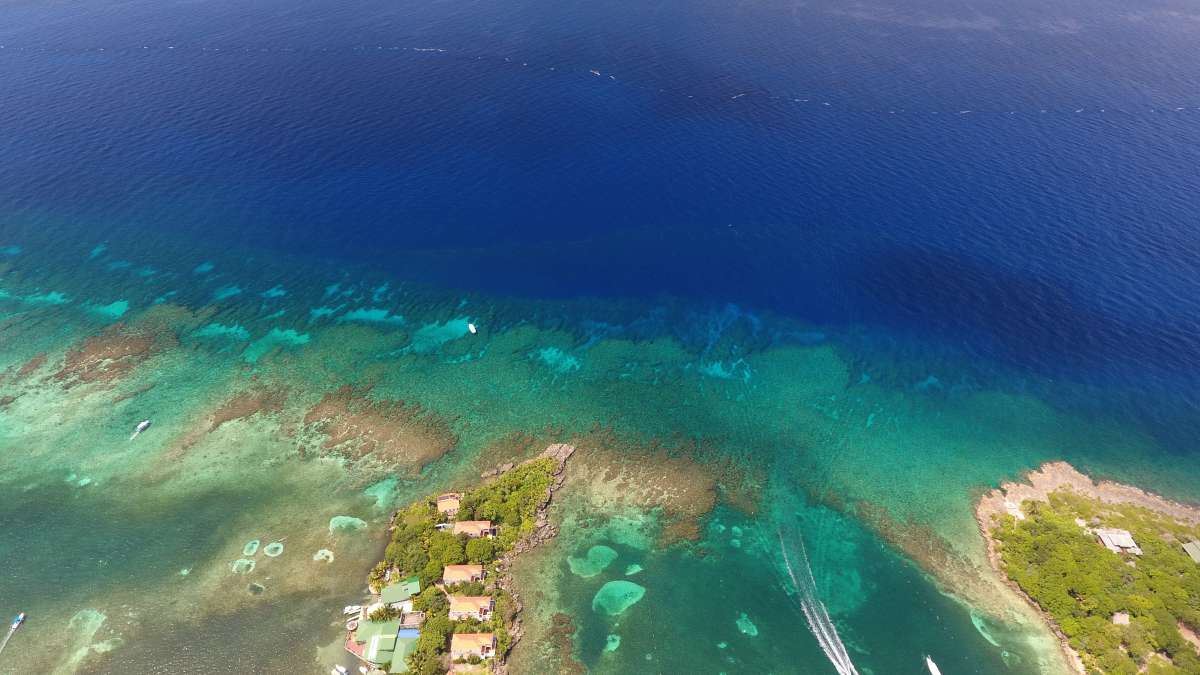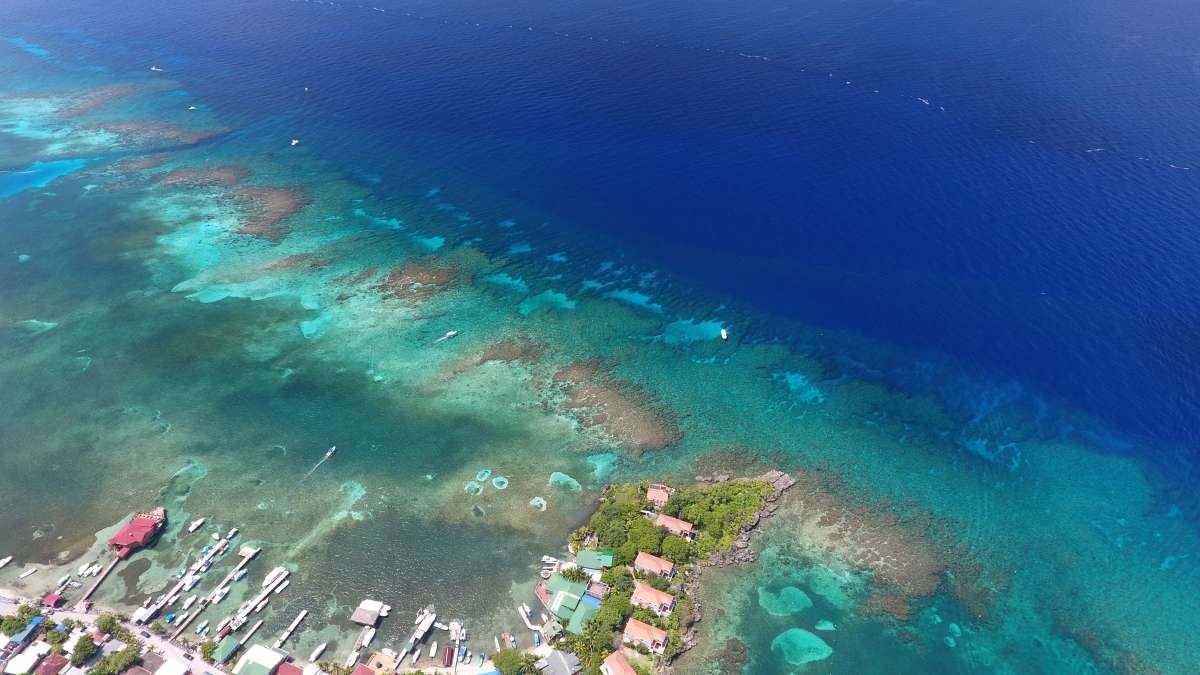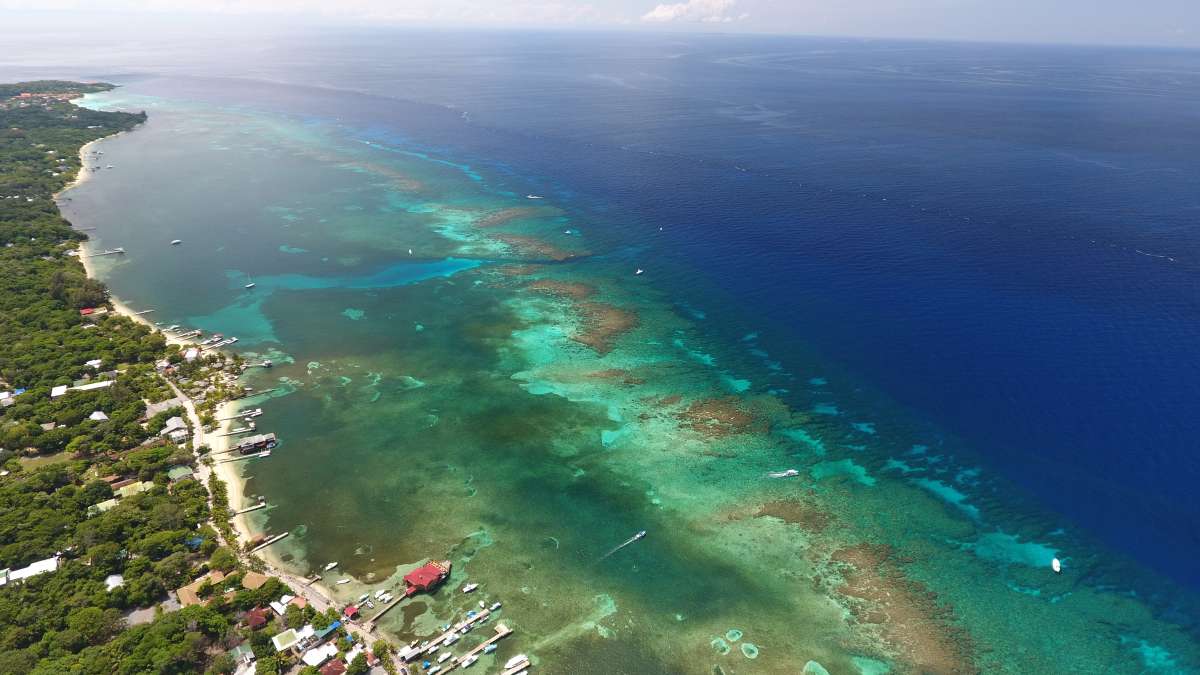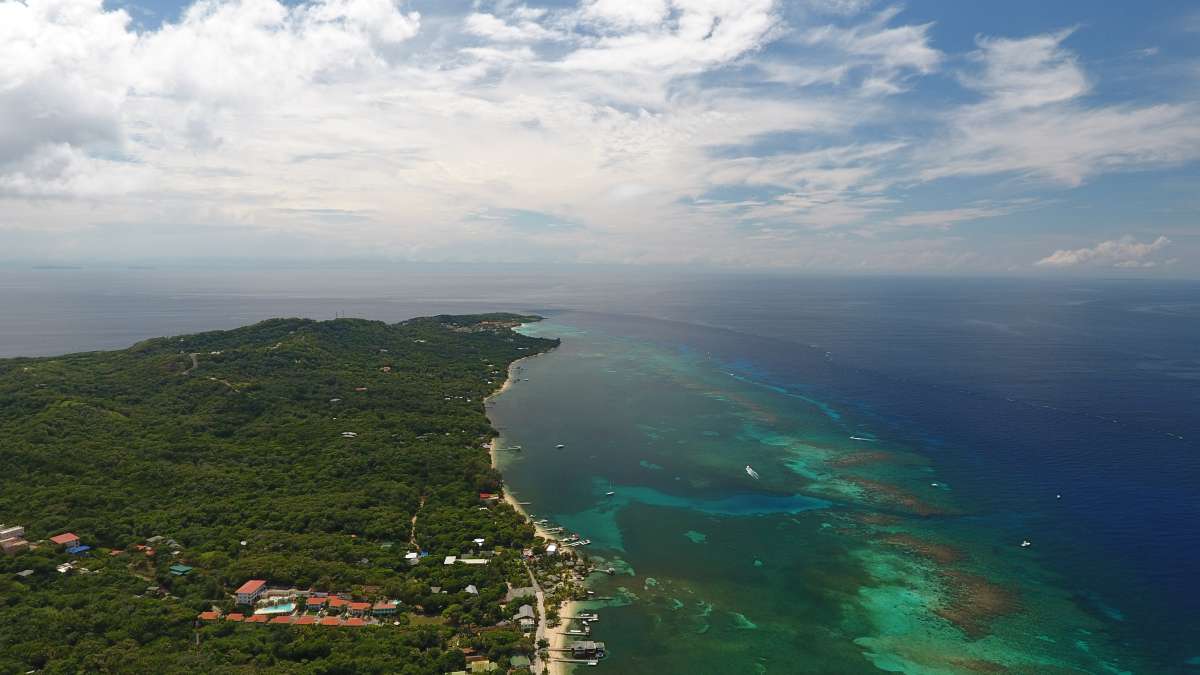Dive Sites
There are over 80 dive moorings in the Roatan Marine Park, and hundreds more dive sites all around the island. You will find a brief description of some of the signature dives in the Roatan Marine Park that regularly feature in our weekly dive schedule. Our experienced instructors guide all your dives to help you make the most of one of the richest reef structures of the Bay Islands.
roatan, honduras
The Roatan Marine Park(RMP) started as a grass roots, community based, not-for-profit organisation located on the island of Roatan, Bay Islands, Honduras. The organisation was formed in 2005 by a group of concerned dive operators and local businesses united in an effort to protect Roatán’s fragile coral reefs and local ecosystems.
Through your generous support of such organizations and by remembering that, at the end of the day, we all are tourists on this island, we can work to preserve this beautiful and historied island for future generations. We strongly support the RMP and ask that our guests buy the RMP bracelet for USD10.
The point
The Point is comprised of four distinct dive sites: Black Rock, West End Wall, Texas and Pablo's Place. After evaluating the weather conditions and the current, we will start our dive at one of those locations. The converging currents of the North and South Shores of the island meet on a long plateau extending ¾ of a mile from shore, with spectacular soft coral formations and giant barrel sponges peppering this alien landscape. Drift along the Pablo's Place bottomless wall, teeming with soft coral, black gorgonians and sponges - perhaps even spot a hammerhead shark. Explore the Texas flats, with the giant barrel sponges, sargassum trigger fish and schools of snapper in the washing-machine like currents. Cruise along the steep slopes of West End Wall, and maybe even catch a glimpse of the deep Josie J wreck on a clear day. These dive sites are most suitable for more experienced divers, as the currents and the surface conditions can be more challenging than our average conditions.
Tabyana's/SeaQuest/Three Brothers/Turtle Crossing
Start your week with a leisurely cruise along the sandy flats of these dive sites. Keep your eyes out for the flash of a sting ray's tail on the deep sand shelf at the bottom of the 24m/80ft mini-wall. Meet the resident grouper and turtles, or examine the various coral stands for the teeming macro life in the shallow plateau towards the end of your dive. Any of these makes a great dive to start off your week's scuba vacation.
Lighthouse/Moonlight/Dixie's Place
These bright, shallow dive sites are not only a very short boat ride from the dive shop, bur they also offer excellent marine life variety, with a high chance of hawksbill turtle and black grouper sightings. Suitable for all levels, these dive sites have nice shallow areas with easy access to a vertical section of deep wall.
Canyon Reef
As the name implies, this dive site consists of a series of canyons starting shallow, and bottoming out at about 18m/60ft, continuing on to a gentle slope punctuated with soft coral stands. Swim up and down the various canyons and drift away, or follow the shallow reef back to the boat. Keep your eyes out for eagle rays and other pelagics cruising over the sand slope, or inspect the soft coral stands in search of that elusive seahorse. This dive site is best for intermediate and experienced divers.
Overheat Reef/Green Outhouse
We start the dive at Overheat Reef in the shallows where we often encounter large snapper, free-swimming eels and squid, on top of a healthy section of reef. The large coral boulders cut with sand channels lead us out to the wall, which often has channel clinging craps, cleaning stations with large grouper and many other critters hiding. The northern part of the wall is one of the healthiest sections of reef in the Roatan Marine Park in terms of actual coral coverage. This dive site, often preceded by El Aguila (wreck) in the morning two-tank dive, can be tailored to suit any level of diver.
El aguila(Wreck)
The El Aguila is a 220ft cargo boat that was stripped and scuttled by Anthony's Key Resort in 1997 over a dive site called Deep Eel Garden. In 1998, Hurricane Mitch slammed the island and split the wreck into three distinct pieces - it is now even more interesting to explore! Working from stern to bow, we usually have a bottom time of around 15mins on the wreck itself before swimming off on to the wall and finishing the dive in shallow water. Depending on the level of the group, there are many interesting swimthrus on the wreck itself. Look out for the garden eels around the stern, the resident green moray eel, and the large friendly grouper and snapper that circle the area. There is also an array of interesting channels and features on the wall itself, including a small cave. Watch the fish congregate around you on the safety stop, as you drift into an area of converging currents. This dive site is for experienced divers - good air consumption and good buoyancy control are a must. As this is a popular dive site, beware the boat and diver traffic!
hole in the wall
It is one of the most famous dive sites on Roatan, with many different areas to explore. Following the sand chute down to the actual "hole" in the wall takes us to one of the deepest dives on our schedule, where we bottom out to a maximum depth of 40m/130ft. In addition to several networks of swimthrus (think "swiss cheese"), there is a small cave system - where we can often find silversides or glassy sweeper inhabiting the darker areas. Bring your flashlight to look into all the nooks and crannies, and maybe find an octopus or some rarer blennies. Most of these swimthrus are shallow, and there are also nice big sandy areas with easy access to the deep wall, ideal for all types of training dives. The full complement of this dive site is best suited to experienced divers - experience with deep dives and good buoyancy control are necessary to explore the hole and the swimthrus. Do not enter the cave system with out proper training or guidance.
Blue Channel
The topography on this dive differs significantly from the surrounding reef. Starting on the gently sloping wall, there is a swimthrough that cuts in towards the shallow reef. Explore the overhangs in the north wall or check out the extensive swimthrough network punctuating the southern wall. Look for the resident green moray eels, and keep your eyes peeled for juvenile spotted drum and pipefish by the coral stands at the entrance to the channel, and check out the schools of goatfish and snapper that migrate through the channel. In August/September for only a few weeks, the southern wall will fill with an abundance of silversides, so thick you cannot see a few feet in front of you. This dive site is great for a range of experience levels from novice to advanced, and the shallow walls are also ideal for snorkelling.
Half Moon Bay Wall
One of the most beautiful sections of wall is right here outside the dive shop! Cruise along the wall, and take swimthrus and channels into the shallower areas to meander along the coral fingers up on top of the reef. On days with a ripping northbound current, cruise through as many as 5 different dive sites on one dive. Suitable for all levels, current conditions and buoyancy control abilities permitting.
Gibson Bite
Perhaps one of the most undrerrated dive sites on Roatan, it has a range of swimthrus and different types of topography to explore. The dive gives you access to swimthroughs, chimneys, channels and overhangs, which keep the dive varied and interesting. When done as a deeper, we find the "mini Mary's Place" crack at 27m/90ft - a very unique formation, and the Gibson Bite boat channel occasionally turns into a "mini Spooky Channel". Keep your eyes out for eagle rays in the deep, moray eels and crabs in the various overhangs. Best suited to the intermediate or advanced diver.
pillar coral
Surrounded by Overheat Reef to the south, and the El Aguila wreck to the north, Pillar Coral is named after a coral pinnacle that juts out off the wall, topping off at about 27m/90ft. An excellent drift dive in either direction, towards the El Aguila wall, or the Overheat shallows. Better for intermediate or experienced divers for the full complement, but can easily be tailored to more novice divers.
Peters place
Peter's Place, just north of the wreck is an impressive wall, that goes on to such an extensive deep sand slope that tricks your eye. A great multilevel drift dive, to cruise along the deep wall and explore the canyons and crevices in the shallows. The Bears Den cave is also accessible by drifting north from Peter's Place. This dive is best for intermediate or experienced divers.
Spooky channel
One of the most dramatically different dive sites in the whole of Roatan, it was formed by an ancient river gorge cutting through the island. Coming out from a somewhat murky lagoon, you enter into the cathedral bowl at the back of the channel. The generally moderate visibility combined with the razors of light coming from the surface gave rise to the "spooky" factor. Working your way towards theouter wall, you will be rewarded with spectacular views to the sheer cliffs that rise from 27m/90ft almost all the way to the surface. A network of shallow swimthroughs spits you out onto the shallow reef, where you will often find snapper, grouper and barracuda hanging out near the boat mooring. Although there is not as much life in the channel itself as on other parts of the reef, keep a look out for sea stars, schools of southern sennets, toadfish in the cracks and lobster crawling around the boulders on the bottom. Experienced divers preferred, good air consumption and comfort in overhead environments are essential!

